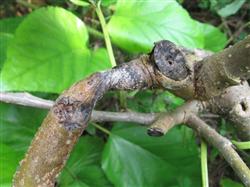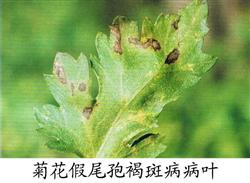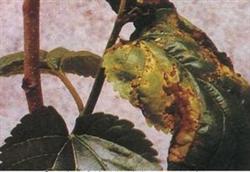Removing Mulberry Flowers and Mulberry fruits to Control Mulberry shoot Breaking Disease

Mulberry shoot-breaking disease, also known as branch-breaking disease, white mulberry disease. Shoot-breaking disease is a widely prevalent mulberry disease in recent years. It is a disease caused by the pathogen of Sclerotinia sclerotiorum to infect new shoots through the stalk of morula, causing the base of new shoots to rot and break. The characteristic of the disease is that mulberry trees with long female mulberry flowers or androgynous flowers are prone to this disease, and the rate of shoot breaking ranges from 10 to 30%. The disease is easy to spread in mulberry garden and seriously affects the leaves used for spring silkworm rearing. In order to effectively control and stop the occurrence and spread of the disease, according to the characteristics that the disease occurs only on mulberry trees with female mulberry flowers. Sericulture scientists and technicians should go deep into the grass-roots level and guide the vast number of sericulture farmers to remove female mulberry flowers and fruits from March to April. In view of the fact that it is difficult for most silkworm farmers to identify male and female mulberry flowers, silkworm farmers are advised to remove all mulberry flowers and fruits in mulberry gardens where this disease has occurred, so as to "pick as soon as they see the flowers" and "pick the fruits as soon as they see", so as to cut off the pathogen transmission route, reduce the consumption of mulberry nutrients by long mulberry flowers and mulberry fruits, enhance mulberry tree potential and increase mulberry leaf yield. Through years of practice, it has been proved that picking mulberry flowers and mulberry fruits before mulberry fruit is not white can effectively put an end to the occurrence of tip-breaking disease and can be completely cured by picking it for two years in a row. It is the best prevention and control method with both economy and environmental protection.
- Prev

Control of pseudotail brown spot of chrysanthemum
The main results are as follows: 1. the symptom spot is born on both sides of the leaf, nearly round, the edge is not obvious at the initial stage, and then sometimes produces a dark brown thin coil, often along the edge of the leaf. The foliar disease spot is light yellow at the beginning, brown to dark brown in the later stage, and grayish brown on the back of the leaf. 2, the disease is caused by fungi, pathogen.
- Next

How to prevent and cure mulberry rotten head blast
Mulberry bacterial black blight, commonly known as "rotten head blast", is one of the serious mulberry diseases. Symptoms: ① black blight bud, the first bud of the disease lost luster and died sharply; ② shoot stem rot. Black rot appeared in the stem of the new shoot, necrosis of phloem and xylem in part, and rotten head of ③. After the top bud leaf is infected with disease, the growth point.
Related
- Fuxing push coffee new agricultural production and marketing class: lack of small-scale processing plants
- Jujube rice field leisure farm deep ploughing Yilan for five years to create a space for organic food and play
- Nongyu Farm-A trial of organic papaya for brave women with advanced technology
- Four points for attention in the prevention and control of diseases and insect pests of edible fungi
- How to add nutrient solution to Edible Fungi
- Is there any good way to control edible fungus mites?
- Open Inoculation Technology of Edible Fungi
- Is there any clever way to use fertilizer for edible fungus in winter?
- What agents are used to kill the pathogens of edible fungi in the mushroom shed?
- Rapid drying of Edible Fungi

